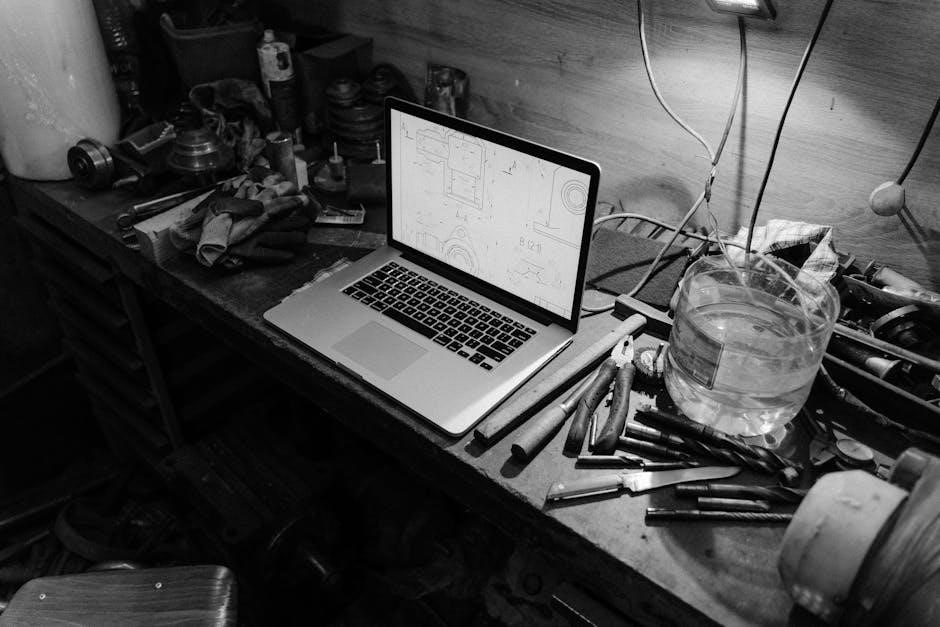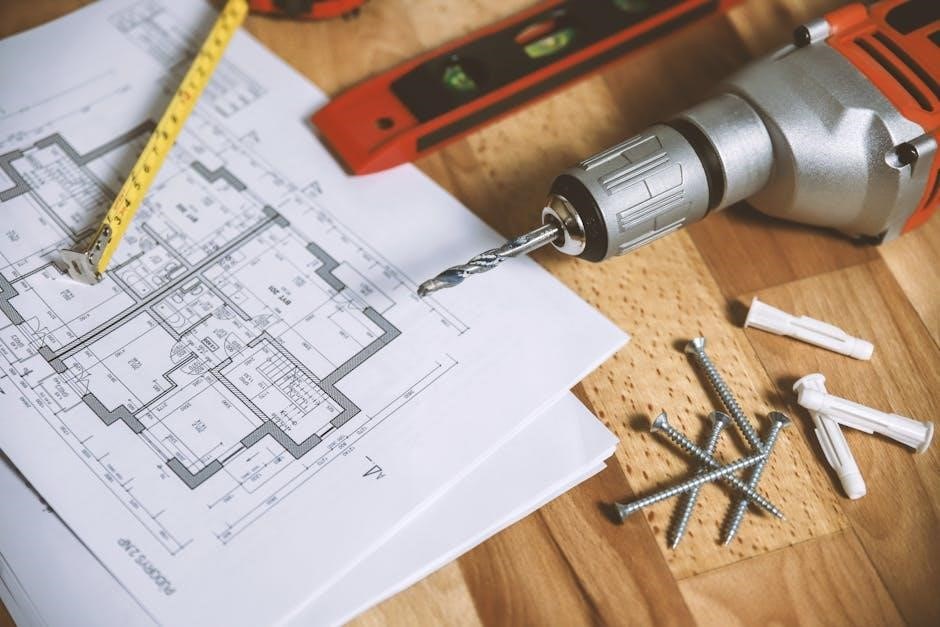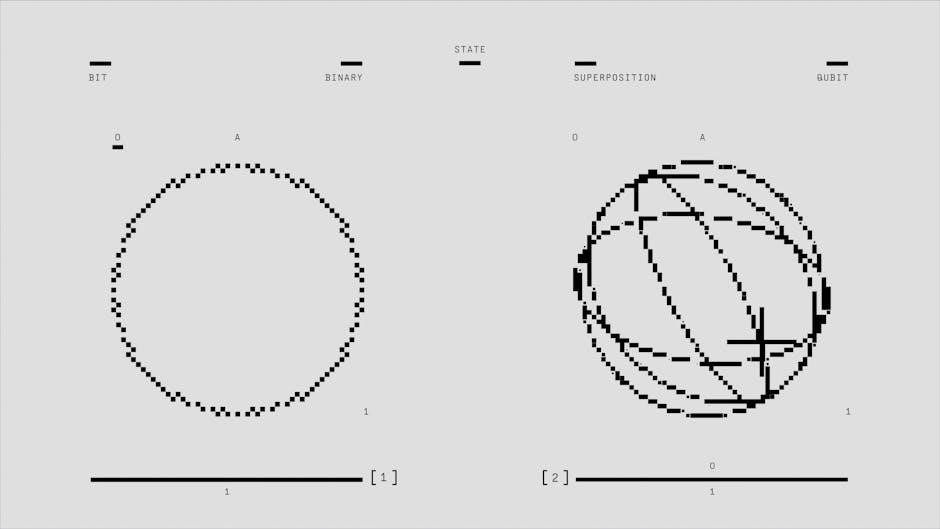manual transaxle diagram
1.1 Overview of Manual Transmissions
A manual transmission‚ or stick shift‚ enables drivers to manually engage gears using a clutch pedal and shift lever. It consists of gears‚ shafts‚ and synchronizers‚ with diagrams providing a clear visual breakdown of components and their interactions‚ essential for understanding and maintenance.
A manual transmission‚ also known as a stick shift‚ is a type of drivetrain that requires the driver to manually control gear changes using a clutch pedal and shift lever. It consists of a gearbox with multiple gears‚ shafts‚ and synchronizers that work together to transmit power from the engine to the wheels. Exploded diagrams and schematics provide a detailed visual breakdown of these components‚ making it easier to understand the assembly and function of the system. These diagrams are essential for repairs‚ maintenance‚ and comprehending how the transmission operates.
1.2 Importance of Understanding Manual Transaxle Diagrams
Understanding manual transaxle diagrams is crucial for identifying components‚ diagnosing issues‚ and performing repairs. These diagrams provide a visual representation of the transmission’s assembly‚ helping technicians and enthusiasts locate parts like gears‚ shafts‚ and synchronizers. They also illustrate how components interact‚ enabling precise troubleshooting and efficient maintenance. Accurate diagrams are essential for ensuring safety and avoiding costly mistakes during repairs or rebuilds‚ making them indispensable for anyone working with manual transmissions.

Exploded View of a Manual Transaxle
An exploded view of a manual transaxle provides a detailed visual representation of its components‚ showcasing how parts like gears‚ shafts‚ and synchronizers are assembled and connected.
2.1 Components of a Manual Transaxle
A manual transaxle consists of key components such as the input shaft‚ main shaft‚ gears‚ synchronizers‚ and bearings. The input shaft connects to the clutch‚ while the main shaft holds the gears. Synchronizers ensure smooth gear engagement‚ and bearings reduce friction between moving parts. Exploded diagrams reveal these components‚ showing how they are arranged and connected within the housing. Understanding these parts is essential for diagnosing issues and performing repairs effectively.
2.2 Detailed Parts List
A manual transaxle includes an extensive list of components‚ such as the input shaft‚ main shaft‚ gears‚ synchronizers‚ bearings‚ and gear selector forks. The input shaft connects to the clutch‚ while the main shaft houses the gears. Synchronizers ensure smooth gear transitions‚ and bearings reduce friction. Additional parts include seals‚ gaskets‚ and fasteners. Detailed diagrams label each component‚ aiding in identification and repair. This comprehensive list is crucial for understanding the assembly and functionality of the transaxle system.

2.3 Assembly and Disassembly Overview
Assembling a manual transaxle requires precision‚ starting with the main shaft and gears‚ followed by the input shaft and bearings. Synchronizers and gear selector forks are then installed‚ ensuring proper alignment. Disassembly involves reversing this process‚ carefully removing components to avoid damage. Specialized tools‚ like bearing pullers and presses‚ are essential for both assembly and disassembly. The process demands attention to detail to ensure all parts fit correctly and function smoothly‚ maintaining the transaxle’s performance and longevity.

Key Parts of a Manual Transaxle
The essential components include the input shaft‚ main shaft‚ gears‚ synchronizers‚ and bearings. These parts work together to facilitate gear engagement and smooth power transmission.
3.1 Input Shaft and Clutch Disc
The input shaft is splined to the clutch disc‚ connecting the engine to the transmission. When the clutch pedal is pressed‚ it disengages the disc from the engine‚ allowing gear shifts. The clutch disc is a friction plate that engages with the flywheel‚ ensuring smooth power transfer. Proper alignment and lubrication are crucial for their functionality and longevity‚ as detailed in exploded view diagrams and service manuals.
3.2 Main Shaft and Gears
The main shaft is the central component of the transmission‚ rotating to transmit power through gears. It meshes with the countershaft gears‚ providing different speed ratios. The gears are mounted on bearings and engage via synchronizers. Exploded diagrams reveal the intricate layout of these parts‚ showcasing how they interact during gear changes. Proper lubrication and alignment ensure smooth operation‚ as highlighted in technical diagrams and service manuals.
3.3 Synchronizers and Gear Selector Forks
Synchronizers ensure smooth gear engagement by aligning gear speeds before locking them in place. They consist of hubs‚ sleeves‚ and keys that engage with the gear teeth. Gear selector forks‚ attached to the shift mechanism‚ move the synchronizer sleeves to engage the desired gear. Exploded diagrams show their precise assembly‚ while technical manuals detail their operation. Proper lubrication and alignment are critical for their function‚ as highlighted in maintenance guides and exploded views.
3.4 Bearings and Shaft Bearings
Bearings and shaft bearings are critical components in a manual transaxle‚ ensuring smooth operation by reducing friction between moving parts. They support the input and main shafts‚ allowing them to rotate freely. Roller and ball bearings are commonly used‚ with specific types like needle bearings for high-speed applications. Exploded diagrams detail their placement and assembly‚ while service manuals emphasize proper lubrication to prevent wear. Regular inspection and replacement of bearings are essential for maintaining transmission performance and reliability‚ as outlined in technical guides and maintenance schedules.

Working Mechanism of a Manual Transaxle
The manual transaxle operates through driver-controlled gear engagement using the clutch and shift lever‚ with synchronizers ensuring smooth transitions. Diagrams illustrate the mechanical process of gear selection and shaft interaction.
4.1 Gear Selection Process
The gear selection process involves the driver pressing the clutch pedal‚ disengaging the engine from the transmission‚ and using the shift lever to select the desired gear. The synchronizer ensures smooth engagement by matching gear speeds. Diagrams illustrate the mechanical interaction between the clutch‚ shift fork‚ and gears‚ showing how the driver’s input translates to gear changes. This process requires coordination between the clutch pedal and shift lever‚ with the transaxle’s internal components facilitating seamless transitions between gears.
4.2 Role of the Clutch in Manual Transmissions
The clutch is a critical component‚ acting as a friction interface between the engine and transmission. When pressed‚ it disengages the engine from the transaxle‚ allowing gear changes without grinding. Diagrams show the clutch disc‚ pressure plate‚ and release bearing. Proper clutch operation is essential for smooth shifting‚ preventing damage to gears and synchronizers. Its role is vital in enabling manual control over gear engagement‚ making it a fundamental part of the manual transmission system’s functionality and efficiency.
4.3 Synchronizer Functionality
Synchronizers ensure smooth gear engagement by matching the speed of the gear and shaft. They consist of a hub‚ sleeve‚ and keys. When shifting‚ the sleeve moves‚ locking the gear to the shaft. Diagrams illustrate how synchronizers prevent gear grinding by equalizing speeds. This mechanism is vital for seamless transitions between gears‚ reducing wear and enhancing driving efficiency. Proper synchronizer alignment and function are critical for maintaining transmission performance and longevity.

Manual Transaxle Diagrams and Schematics
Manual transaxle diagrams provide detailed visual representations of components‚ including exploded views and gear engagement schematics. These visuals aid in understanding assembly‚ disassembly‚ and functionality‚ proving essential for technicians and enthusiasts alike.
5.1 Exploded View Diagrams
Exploded view diagrams of a manual transaxle provide a detailed‚ three-dimensional representation of all components‚ showcasing their relationships and assembly order. These diagrams are invaluable for technicians‚ as they illustrate how parts like gears‚ shafts‚ bearings‚ and synchronizers fit together. By visually breaking down the transmission‚ exploded views simplify the identification and location of each part‚ making repair and rebuilding processes more efficient. They are often used in service manuals and technical guides to aid in diagnostic and maintenance tasks.
5.2 Schematic Representation of Gear Engagement
A schematic representation of gear engagement in a manual transaxle illustrates the step-by-step process of shifting gears. It visually depicts how the driver’s input‚ through the clutch pedal and gearshift‚ engages and disengages gears via synchronizers and selector forks. These diagrams show the flow of mechanical interactions‚ from the input shaft to the main shaft‚ highlighting how gears mesh and unmesh smoothly. This visual aid helps technicians and enthusiasts understand the precise timing and movement required for seamless gear transitions‚ aiding in both troubleshooting and maintenance tasks.
5.3 Sectional Views for Better Understanding
Sectional views of a manual transaxle provide a detailed‚ cross-sectional perspective of its internal components. These diagrams reveal the intricate relationships between gears‚ bearings‚ shafts‚ and synchronizers‚ offering a clearer understanding of how each part interacts. By visually exposing the inner workings‚ such as the engagement of gears and the operation of the synchronizer rings‚ sectional views are invaluable for diagnosing issues‚ planning repairs‚ and educating those new to transmission mechanics. They complement exploded views and schematics‚ offering a comprehensive visual toolkit for technicians and enthusiasts alike.

Applications of Manual Transaxle Systems
Manual transaxle systems are commonly used in rear-wheel drive vehicles‚ all-wheel drive vehicles‚ and high-performance applications‚ offering precise control and efficiency in power transmission.
6.1 Rear-Wheel Drive Vehicles
Manual transaxle systems are widely used in rear-wheel drive (RWD) vehicles‚ where power is transmitted exclusively to the rear wheels. These systems are favored for their simplicity‚ efficiency‚ and weight distribution. The transaxle housing integrates the transmission and differential‚ reducing complexity and improving space utilization. Exploded view diagrams reveal components like gears‚ shafts‚ and bearings‚ essential for understanding how power is transferred. This setup is ideal for applications requiring precise control and mechanical simplicity‚ making it a popular choice for both everyday and performance-oriented RWD vehicles.
6.2 All-Wheel Drive Vehicles
Manual transaxle systems are also employed in all-wheel drive (AWD) vehicles‚ where power is distributed to all four wheels. These systems enhance traction and stability‚ particularly in challenging driving conditions. The transaxle plays a crucial role in managing power distribution‚ with diagrams illustrating how gears and shafts interact to achieve optimal performance. While more complex than RWD setups‚ AWD manual transaxles offer improved control‚ making them suitable for vehicles requiring enhanced grip and versatility in various terrains.
6.3 High-Performance Applications
Manual transaxles are widely used in high-performance vehicles due to their durability and ability to handle increased torque and horsepower. These systems often feature reinforced components‚ such as high-strength gears and bearings‚ to withstand extreme conditions; Diagrams of high-performance manual transaxles reveal specialized designs‚ including close-ratio gear sets for rapid shifting and optimized power delivery. Such configurations are common in racing and sports cars‚ where precise control and quick acceleration are critical. The transaxle’s compact design also enhances weight distribution‚ further improving handling and stability in demanding environments.

Maintenance and Repair
Regular lubrication and inspection of gears‚ bearings‚ and synchronizers are crucial for maintaining manual transaxle performance. Diagrams from repair manuals help identify common issues like worn gears or faulty bearings‚ ensuring precise repairs and extending the system’s lifespan.
7.1 Common Issues and Troubleshooting
Common issues in manual transaxles include worn gears‚ faulty synchronizers‚ and bearings failure. Troubleshooting often starts with analyzing symptoms like grinding noises or difficulty shifting gears. Diagrams from service manuals help pinpoint problems by illustrating component locations and connections. For instance‚ a worn synchronizer ring may cause gears to clash‚ while a damaged bearing could lead to vibrations. Replacing faulty parts as shown in exploded view diagrams ensures accurate repairs and restores smooth operation. Regular inspection and lubrication can prevent these issues from arising.
7.2 Lubrication and Fluid Maintenance
Proper lubrication is crucial for manual transaxle longevity. Use high-quality gear oil or ATF as specified in service manuals. Regular fluid changes prevent wear on gears‚ bearings‚ and synchronizers. Refer to exploded view diagrams to locate oil ports and ensure correct lubrication paths. Insufficient or degraded fluid can lead to overheating and component failure. Always follow manufacturer guidelines for fluid type and change intervals. Cleaning drain plugs and refilling with fresh fluid maintains optimal performance and prevents premature wear on moving parts.
7.3 Rebuilding a Manual Transaxle
Rebuilding a manual transaxle involves disassembling‚ inspecting‚ and replacing worn components. Use exploded view diagrams to guide the process‚ ensuring all parts are correctly identified and reassembled. Replace bearings‚ seals‚ and synchronizers as needed‚ and clean all surfaces thoroughly. Lubricate new parts before installation and follow torque specifications for bolts and shafts. Proper alignment of gears and shafts is critical for smooth operation. Refer to service manuals and schematics to ensure accuracy and avoid costly mistakes during the rebuild process.

Tools and Equipment
Specialized tools like bearing pullers‚ gear setters‚ and dial indicators are essential for precise disassembly and assembly of manual transaxle components‚ ensuring proper alignment and function.
8.1 Specialized Tools for Transaxle Repair
Specialized tools are crucial for transaxle repair‚ including bearing pullers for removing bearings without damage and dial indicators to measure gear alignment accurately. Gear setters ensure proper gear engagement‚ while slide hammers and universal joints aid in disassembly. Shaft locks prevent rotation during repair‚ and hydraulic presses are used for bearing installation. These tools‚ along with custom adapters and precision gauges‚ ensure precise adjustments and prevent component damage. Always use manufacturer-recommended tools for compatibility and safety during repairs.
8.2 Diagnostic Equipment
Diagnostic equipment is essential for identifying issues in manual transaxles. Scan tools connect to the vehicle’s ECU to retrieve error codes and monitor transmission performance. Multimeters measure voltage and resistance in sensors and solenoids. Pressure test kits detect leaks or internal damage by applying controlled pressure. Endoscope cameras allow visual inspection of hard-to-reach components. These tools help pinpoint problems like worn gears or faulty synchronizers‚ ensuring accurate repairs. Manufacturer-recommended diagnostic equipment is critical for reliability and compatibility with the specific transaxle system being serviced.
Safety Precautions
Always wear protective gear‚ including gloves and safety glasses‚ when working on manual transaxles. Ensure proper ventilation and follow manufacturer guidelines for handling tools and components safely.
9.1 Safety Measures During Repair
Ensure the vehicle is securely lifted on jack stands and engage the parking brake before starting repairs. Disconnect the battery to prevent electrical hazards. Always wear protective gear‚ including gloves and safety glasses‚ to avoid injuries from sharp edges or tools. Use specialized tools correctly to prevent damage to components and personal injury. Keep a fire extinguisher nearby and maintain proper ventilation in the workspace. Avoid wearing loose clothing that could get caught in moving parts or tools. Follow all manufacturer guidelines and safety protocols to ensure a safe working environment.
9.2 Handling Specialized Tools
When working with tools for manual transaxle repair‚ ensure proper handling to avoid damage or injury. Use tools specifically designed for transaxle work‚ such as bearing pullers and gear shaft extractors. Always refer to the manufacturer’s guidelines for tool usage. Regularly inspect tools for wear or damage and replace them as needed. Store tools in a clean‚ dry environment to prevent rust or corrosion. Proper tool maintenance ensures longevity and reliability during repairs. Never use tools beyond their intended purpose to avoid component damage or personal harm.
Understanding manual transaxle diagrams is crucial for effective maintenance and repair. Knowing components and proper tool handling ensures longevity and reliable performance of the transmission system.
10.1 Summary of Key Points
This article provides a comprehensive overview of manual transaxle diagrams‚ detailing components like gears‚ shafts‚ and synchronizers. Exploded views and schematics aid in understanding assembly and function. Regular maintenance‚ proper lubrication‚ and specialized tools are emphasized for longevity. Safety precautions and troubleshooting tips are highlighted‚ ensuring reliable performance; By leveraging diagrams‚ enthusiasts and professionals can effectively diagnose and repair manual transaxle systems‚ making complex mechanisms more accessible for maintenance and customization.
10.2 Importance of Proper Maintenance
Proper maintenance is crucial for extending the life of a manual transaxle. Regular lubrication prevents wear on gears and bearings‚ while fluid checks ensure optimal performance. Inspecting and replacing worn components‚ like synchronizers or seals‚ avoids costly repairs. Adhering to service intervals and using genuine parts maintains reliability. Neglecting maintenance can lead to premature failure‚ requiring extensive overhauls. Consistent care ensures smooth gear engagement‚ reduces the risk of breakdowns‚ and keeps the transaxle operating efficiently for years.

References
Key references include service manuals‚ technical diagrams‚ and publications detailing manual transaxle components and functionality. These resources provide comprehensive insights for repair and understanding.
11.1 Service Manuals
Service manuals provide detailed instructions and diagrams for manual transaxle maintenance and repair. They include exploded views‚ component lists‚ and lubrication guidelines. These manuals cover troubleshooting‚ disassembly‚ and reassembly processes‚ ensuring accurate repairs. Specific models‚ like the Hyundai Coupe/Tiburon‚ have dedicated manuals with step-by-step procedures. They are essential for professionals and DIY enthusiasts‚ offering insights into gear engagement and synchronizer functionality. Regularly updated‚ these manuals are vital for maintaining optimal transaxle performance and addressing common issues effectively.
11.2 Technical Diagrams
Technical diagrams provide visual representations of manual transaxle components and their interactions. These include exploded views‚ parts lists‚ and schematic representations of gear engagement. Diagrams detail synchronizers‚ gear selectors‚ and shafts‚ aiding in understanding the mechanical workings. Specific models‚ like the MT82 Getrag‚ feature labeled parts for clarity. Such visuals are crucial for diagnostics and repairs‚ ensuring precise disassembly and reassembly. They also highlight lubrication points and bearing placements‚ essential for maintenance. These diagrams are indispensable for technicians and enthusiasts alike‚ offering a clear guide to complex systems.
